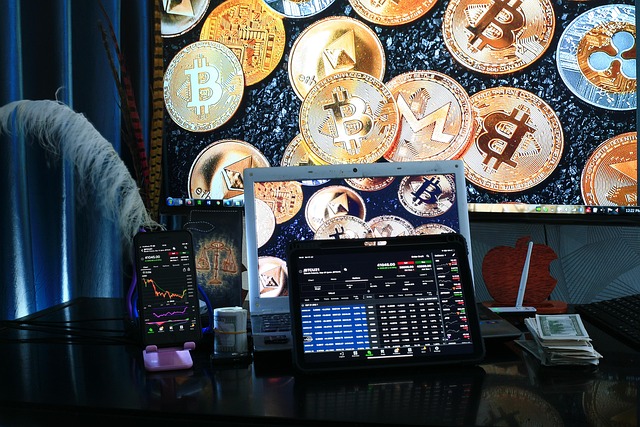BlackRock, five others account for 88% of all tokenized treasury issuance
New data from RWA.xyz, a platform tracking tokenized real-world assets, shows that six entities are responsible for 88% of all tokenized US Treasurys. The data suggests a concentration among a few funds as the market continues to develop.The largest issuer of tokenized treasures continues to be BlackRock. The company’s tokenized US treasury fund, called BUIDL, has a market capitalization of $2.5 billion, 360% higher than its nearest competitor. BlackRock disclosed a total of $11.6 trillion in assets under management in the first quarter of 2025. Rounding out the top six are Franklin Templeton’s BENJI, with a market capitalization of $707 million, Superstate’s USTB at $661 million, Ondo’s USDY at $586 million, Circle’s USYC at $487 million, and Ondo’s OUSG fund holding assets worth $424 million. Together, those six funds account for 88% of all tokenized treasuries issued.A chart of the top six tokenized treasury funds by market cap. Source: RWA.xyzAccording to RWA.xyz data, the largest tokenized treasury funds have seen consolidation since the beginning of 2025. Of the top six funds, only Circle’s USYC experienced a decline in market cap over the past few months. Notably, BUIDL’s market cap increased by 291% from Jan. 1 to April 24. It now makes up 41.1% of the total tokenized US Treasurys market cap.Tokenized treasury funds market cap over time graph. Source: RWA.xyzCentralization of tokenized RWAs has a dark side: MEXCAccording to Tracy Jin, chief operating officer of MEXC, the centralization of tokenized real-world assets has a dark side, especially if those RWAs are on permissioned or semi-centralized blockchains.”Most tokenized assets will be issued on permissioned or semi-centralized blockchains,” Jin told Cointelegraph. “This gives authorities the power to issue restrictions or confiscate assets. The tokenization of assets such as real estate or bonds is still tied to the national legal system.”The tokenized real-world asset market is expected to boom in 2025. The trend is driven by regulatory clarity, interoperability, solutions for liquidity, the evolution of identity from physical to digital, and even fractional ownership. According to RWA.xyz, the sector total market cap reached a high of $21.3 billion on April 21. Magazine: Tokenizing music royalties as NFTs could help the next Taylor Swift
China may shift from US Treasurys toward gold, crypto — BlackRock exec
Central banks, particularly China, may start to shift away from US Treasurys, exploring alternatives such as gold and Bitcoin, according to Jay Jacobs, BlackRock’s head of thematics and active ETFs.In a recent interview with CNBC, Jacobs said that geopolitical tensions and rising global uncertainty are accelerating diversification strategies among central banks.He pointed to a long-term trend where countries have been reducing their reliance on dollar-based reserves in favor of assets like gold and, increasingly, Bitcoin (BTC).“This whole diversification away from traditional assets and into things like gold and also crypto […] probably began three, four years ago,” Jacobs explained.He said that recent geopolitical fragmentation has intensified the push toward alternative stores of value.Jacobs referenced growing concerns about the freezing of $300 billion in Russian central bank assets following its invasion of Ukraine, suggesting that such events have prompted countries like China to rethink their reserve strategies.BlackRock executive Jay Jacobs on CNBC. Source: YouTubeRelated: Crypto, stocks enter ‘new phase of trade war’ as US-China tensions riseGeopolitical fragmentation to shape global marketsDuring the interview, Jacobs said BlackRock, the world’s largest asset manager, has identified geopolitical fragmentation as a defining force for global markets over the coming decades:“We really identified geopolitical fragmentation as a mega force that is driving the world forward over the next several decades.”He noted that this environment is fueling demand for uncorrelated assets, with Bitcoin increasingly viewed alongside gold as a safe-haven asset.“We’ve seen significant inflows into gold ETFs. We’ve seen significant inflows into Bitcoin. And this is all because people are looking for those assets that will behave differently,” Jacobs said.Related: Bitcoin ‘decouples,’ stocks lose $3.5T amid Trump tariff war and Fed warning of ‘higher inflation’Investors highlight Bitcoin decouplingNotably, Jacobs is not alone in stressing Bitcoin’s declining correlation with US equities. Several analysts have also observed that Bitcoin is beginning to decouple from the US stock market.On April 22, Alex Svanevik, co-founder and CEO of the Nansen crypto intelligence platform, said Bitcoin’s price is showcasing its growing maturity as a global asset, becoming “less Nasdaq — more gold.”He added that Bitcoin was “surprisingly resilient” amid the trade war compared to altcoins and indexes like the S&P 500, but remains vulnerable to economic recession concerns.Source: Alex SvanevikEchoing this sentiment, QCP Capital said in an April 21 Telegram note that Bitcoin seemed to be sharing some of gold’s limelight as a hedge against macroeconomic uncertainty.“With equities finishing last week in the red and extending an April drawdown, the narrative of BTC as a safe haven or inflation hedge is once again gaining traction. Should this dynamic hold, it could provide a fresh tailwind for institutional BTC allocation,” it wrote.Magazine: Ethereum is destroying the competition in the $16.1T TradFi tokenization race
OpenSea regains NFT market lead as rivals fall behind in user activity
Non-fungible token (NFT) marketplace OpenSea regained its position as the leading platform for digital collectible trading, even as overall market activity declined.Data tracker NFTScan shows that OpenSea has held the top spot in NFT marketplace trading volume for the last 30 days. According to the data, OpenSea holds more than 40% of the market’s trading volume, while Blur, its largest competitor, is at 23%. NFT platform Magic Eden has a 7.69% market share, while OKX NFTs have a 5% market share. The data tracker also shows that in the last month, almost 70% of the wallets transacting with NFTs engaged with OpenSea. More than 610,000 wallets used OpenSea. In the last three months, OpenSea had over 2.1 million wallets engaging with its platform. By comparison, wallets engaging with Magic Eden, Blur and OKX NFT reached a combined market share of 17%, about 103,000 wallets. In the last three months, the platforms had a total of 380,000 wallets trading NFTs on their platforms. NFT marketplace wallet distribution data. Source: NFTScanOpenSea regained NFT dominance amid platform developmentsIn the last quarter of 2024, OpenSea promoted the launch of its new platform OS2. OpenSea co-founder and CEO Devin Finzer said they would “reimagine everything,” and that a new version would come in December. On Feb. 13, OpenSea launched the open beta for OS2, allowing the public to finally use its platform after a period of reserved access for private beta users. The NFT marketplace also teased the launch of the project’s official token, SEA. Apart from launching a revamped NFT marketplace, the project ventured into crypto token trading. On April 19, the platform announced that it had opened its Solana trading access for all its users, skipping a scheduled closed beta phase limited to 50,000 users. The new feature allows OpenSea users to trade Solana tokens, including popular memecoins like Bonk and Ai16z. In addition to platform developments, the NFT marketplace had also been freed from regulatory scrutiny. On Feb. 22, Finzer said the US Securities and Exchange Commission had dropped its investigation into the digital collectible marketplace. Related: Polygon NFTs overtake Ethereum collectibles in 7-day salesNFT sales dropped 61% in the first quarter of 2025 OpenSea is regaining its market dominance amid a slowdown in NFT sales volumes. CryptoSlam data shows that in Q1 2025, NFT sales volumes reached $1.5 billion. This represented a 61% decline compared to the $4.1 billion volume in the same period in 2024. Despite declining sales volumes, some metrics show that NFTs are still interesting to many traders. CryptoSlam shows over 359,000 NFT buyers in the last seven days, a 52% increase compared to the previous week. Furthermore, despite the volume slowdown, some collections have shown signs of life. In the last seven days, CryptoPunks surged 82% in sales. In the last 30 days, the collection reached almost $20 million in sales volumes. Magazine: Pokémon on Sui rumors, Polymarket bets on Filipino Pope: Asia Express
The sentiment engine of Bitcoin ETFs is rewiring market structure
The tide of capital once destined for raw spot Bitcoin has begun to flow through institutional canals, spot exchange-traded funds (ETFs), structured products and wrapped exposure, and while the water is rising fast, the waves aren’t quite the same. Bloomberg’s senior ETF analyst, Eric Balchunas, pointed out on X that there is a large movement in leveraged long ETFs and, at the same time, safer bets like gold and cash. Suppose one had to choose if Bitcoin (BTC) was a risk-on or risk-off asset. In that case, it may come down to how investors interpret its narrative, whether they see it as digital gold or another speculative vehicle.Bitcoin’s ETF ecosystem has entered a new phase of capital absorption. On April 23, 2025, daily inflows surpassed $912 million, setting a record for the year. This seemingly marked a dramatic return to bullish sentiment just weeks after prolonged outflows.But this surge is not just a simple return to form. What is taking shape is a strategic redistribution of investor positioning, one with structural implications that could temper the speculative heat familiar from past crypto bull cycles.Bitcoin, in 2025, is no longer a monolithic asset. It is a spectrum of exposure. BlackRock’s iShares Bitcoin Trust (IBIT) was declared the “best new ETF product” by etf.com. From IBIT to derivatives, trusts and leveraged vehicles, the market is now defined by access mechanisms just as much as by price. That access may be soaking up energy that once fueled altcoin seasons, meme runs and vertical spot rallies.This is not a cycle of runaway liquidity. It is one of refined distribution.When exposure displaces ownershipSince the United States greenlit spot Bitcoin ETFs in January 2024, over a dozen products have emerged. By April 2025, ETF inflows had become a primary barometer of market sentiment. Year-to-date, these ETFs have pulled in more than $2.57 billion in net inflows.The biggest single-day surge hit $978.6 million on Jan. 6. Conversely, Feb. 25 saw the largest outflow of the year at $937.9 million. Across 81 trading days in 2025 so far, only 37 have been net positive. The average daily net flow is a modest $31.8 million, suggesting that while institutional interest is robust, it remains volatile and dependent on external signals.These data points reveal a new structural rhythm. ETF capital tends to flow in pulses, reacting to macroeconomic headlines, not crypto-native momentum. Unlike 2021, when funding rates and leverage dominated market direction, today’s price action hinges on whether allocators view Bitcoin as a hedge, a risk asset or both.Related: A guide to crypto trading bots: Analyzing strategies and performanceThis new market plumbing is both a blessing and a bottleneck. Liquidity is deeper than ever, but it is not as kinetic. Long-horizon capital doesn’t chase candles. It waits for basis points. That creates a more stable floor but a lower ceiling. It also suppresses the retail euphoria that once catalyzed altseasons and speculative parabolas.The frontier has not disappeared — it has been absorbed.When everyone buys Bitcoin, but nobody buys riskThe same forces responsible for Bitcoin’s institutional ascent may also be strangling the lifeblood of altcoin speculation. One of the most notable shifts in 2025 is the absence of a classic altseason. In past cycles, BTC dominance would rise, then rotate into Ether (ETH), mid-caps and micro-caps. But this year, the cascade has stalled.Capital that would once have dripped into altcoins now stops at the ETF gateway. With the likes of Larry Fink floating a $700,000 BTC projection, the capital behind that optimism stayed in structured products. It went into IBIT, not Uniswap or a centralized exchange like Coinbase.ETF liquidity fragments exposure. Sovereign wealth funds buy Bitcoin. They do not ape into Solana NFTs. They buy ticker symbols and rebalance quarterly. Their entry provides stability but crowds out chaos, which has always been crypto’s native accelerant.Ether and Solana ETF proposals are now pending. If approved, they may not revive altseasons but institutionalize them. Instead of meme rotations, we may see ETF pair trades instead of MetaMask and Bloomberg terminals. This is capital concentration, not dispersion.Macro catalysts reinforce this trend. In both February and March, CPI prints exceeded expectations. Bitcoin ETFs saw inflows above $200 million on each release, turning inflation anxiety into passive accumulation. This behavior mirrors gold’s post-2008 ETF boom, when monetary policy began shaping commodity flows.Bitcoin has now entered that regime. It is still speculative but no longer wild. Still volatile and still increasingly calculable. The market still runs on belief but trades on compliance.Magazine: Pokémon on Sui rumors, Polymarket bets on Filipino Pope: Asia Express
Saylor holding 10M BTC won’t ‘threaten the protocol,’ says author
Key TakeawaysBitcoin Standard author Saifedean Ammous says that even if one entity owned a huge amount of Bitcoin, it wouldn’t hurt the protocolAmmous reiterated major companies like BlackRock and Strategy don’t own the Bitcoin they hold since it belongs to the investorsAmmous said if these companies ever abused their position, people would likely pull their money and invest somewhere else. Michael Saylor’s Strategy hypothetically hoarding nearly 48% of Bitcoin’s total supply wouldn’t pose any risk to the Bitcoin protocol or its price, says Bitcoin Standard author Saifedean Ammous.“If Michael Saylor ends up with 10 million Bitcoin, what is he going to do? He’s likely just going to leverage them to buy more Bitcoin,” Ammous said during an April 25 interview with crypto entrepreneur Anthony Pompliano.Ammous dismisses Bitcoin hoarders posing risks“Ultimately, I don’t see how it would threaten the protocol in the serious sense,” Ammous said.Ammous said if Saylor managed to accumulate 10 million Bitcoin (BTC), he would be unlikely to “wake up one day and say let’s try and hard fork this so we can make another 5 million Bitcoin supply so that I can have 15.” He reiterated it would diminish the value of his existing 10 million Bitcoin.Bitcoin is trading at $93,250 at the time of publication. Source: CoinMarketCapSeveral crypto market participants have previously raised concerns about Bitcoin whales and at what point their holdings could lead to risks like market manipulation, centralization, or liquidity issues.At the time of publication, Saylor’s firm Strategy holds 538,200 Bitcoin, worth approximately $50.18 billion, according to Saylor Tracker. Meanwhile, the BlackRock iShares spot Bitcoin ETF has net assets worth $54.48 billion, which equates to roughly 585,000 Bitcoin, according to BlackRock data.Strategy paid an average of $67,793 per Bitcoin. Source: Saylor TrackerCollectively, the two firms hold approximately 5.3% of the total Bitcoin supply. However, Ammous said this is not a cause for concern. “It’s not like Michael Saylor or Larry Fink owns all those Bitcoins. They have shareholders who own all those Bitcoins, or ETF holders that own those Bitcoins.”“To the extent that BlackRock and Strategy hold those, they hold those because they are doing their fiduciary share of duties to their shareholders and the ETF holders in a satisfactory way,” Ammous added.Related: ARK Invest ups its 2030 Bitcoin bull case prediction to $2.4MAmmous explained that if BlackRock or Strategy ever started to manage their holdings in a way that’s harmful to shareholders or ETF holders, or starts abusing their position, that’s when investors would sell and look for other ways to gain exposure to Bitcoin.On April 24, Cointelegraph reported that Twenty One Capital, a new Bitcoin treasury company led by Strike founder Jack Mallers with the support of Tether, SoftBank and Cantor Fitzgerald, is looking to supplant Strategy to become the “superior vehicle for investors seeking capital-efficient Bitcoin exposure.”Magazine: Crypto AI tokens surge 34%, why ChatGPT is such a kiss-ass: AI EyeThis article does not contain investment advice or recommendations. Every investment and trading move involves risk, and readers should conduct their own research when making a decision.
Ex-SEC chair, now heading SDNY, offers rebuke in $12M crypto fraud case
Jay Clayton, recently appointed interim US Attorney for the Southern District of New York (SDNY) and former chair of the Securities and Exchange Commission, has begun offering statements in criminal cases involving crypto fraud.In an April 23 notice, the US Attorney’s Office said Eugene William Austin, also known as Hugh Austin, had been sentenced to 18 years in prison following his conviction on conspiracy to commit wire fraud, conspiracy to commit money laundering, and conspiracy to commit interstate transportation of stolen property. Together with his son, Brandon, sentenced to four years, Austin offered fraudulent crypto investment services, resulting in roughly $12 million in losses to more than 24 people.“For years, Hugh Austin was the leader of a fraud and money laundering scheme that stole more than $12 million from more than two dozen victims,” said Clayton. “Austin involved his own son in his crimes, working with him to rip off victims and spending investor money on personal expenses, like luxury hotels […] Austin will now be held accountable for the harm he caused to individual investors and others.”The criminal case involving digital assets marked one of Clayton’s first public statements since becoming the interim US Attorney on April 22. US President Donald Trump nominated Clayton on Jan. 20 when he took office. The district has since seen the resignation of acting US Attorney Danielle Sassoon in response to the Justice Department directing her to halt a case against New York City Mayor Eric Adams.Related: US prosecutors file over 200 victim statements in Celsius ex-CEO’s caseThe nation’s ‘sovereign district’ overseen by a Trump appointee?Under current law, Clayton can serve as interim US Attorney for the district for 120 days without Senate confirmation. Senate Minority Leader Chuck Schumer blocked a vote on Clayton’s nomination, saying Trump had “no fidelity to the law.”Clayton will likely oversee SDNY during the sentencing hearing for former Celsius CEO Alex Mashinsky and potentially other criminal cases involving cryptocurrency. The district is home to Wall Street firms and many of the country’s most prominent financial institutions. Magazine: SEC’s U-turn on crypto leaves key questions unanswered
SEC task force met with Trump-supporting firms to discuss crypto regulation
The US Securities and Exchange Commission (SEC) crypto task force, headed by Hester Peirce, has continued meeting with digital asset company representatives as the agency explores regulatory changes.In an April 24 notice, the SEC task force disclosed a meeting with representatives from crypto firm Ondo Finance and the law firm Davis Polk and Wardwell to discuss “issuing and selling wrapped, tokenized versions of publicly traded US securities.” Ondo Finance donated $1 million to Donald Trump’s inauguration fund, and the law firm announced on April 22 that it would represent the US President’s social media company, Truth Social, to launch crypto-linked exchange-traded funds.According to the meeting request, Ondo Finance planned to discuss registration requirements for tokenized securities, compliance with financial laws, and potentially launching a regulatory sandbox. Cointelegraph reached out to the firm for comment but did not receive a response at the time of publication.The April 24 meeting was the latest in the SEC crypto task force’s outreach to the industry following the departure of former chair Gary Gensler. Former commissioner and Trump appointee Paul Atkins took over leadership at the agency on April 21 after his swearing-in ceremony, but has yet to take action on his proposed crypto agenda.Related: Chiliz meets with SEC Crypto Task Force amid US market reentry plansContinuing outreach to industry under new SEC chairOn April 25, the crypto task force will host a roundtable event to discuss custody, including representatives from Kraken, Anchorage Digital Bank, WisdomTree, and others. Following the approval of crypto exchange-traded funds in 2024, many financial institutions have seen demand for digital asset custody in the US grow significantly.It’s unclear what the SEC’s intentions may be regarding pursuing crypto enforcement cases under Atkins. The commission has stated it will continue cases involving fraudulent activity, but dropped a complaint against Hex founder Richard Heart on April 21. The agency has already announced it will stop investigations or lawsuits against many firms, including Ripple, Coinbase, and Kraken. All three exchanges donated or had executives who supported Trump’s 2024 campaign or inauguration fund.Magazine: Trump’s crypto ventures raise conflict of interest, insider trading questions
Tether boosts Juventus stake to 10% in latest strategic buy
Tether Investments — the investment arm of leading stablecoin issuer Tether — acquired additional shares in Juventus Football Club.According to an April 24 announcement, with its latest investment, Tether brought its total participation in Juventus to over 10.12% of the issued share capital, representing 6.18% of the voting rights. The investment follows the firm’s initial acquisition of 8.2% of the issued shares.Tether’s second Juventus investment announcement’s image. Source: TetherTether CEO Paolo Ardoino said that the investment is not only a short-term financial maneuver but “a commitment to innovation and long-term collaboration.” He added:“We believe Juventus is uniquely positioned to lead both on the field and in embracing technology that can elevate fan engagement, digital experiences, and financial resilience. We’re excited about the opportunities ahead.”Founder of Obchakevich Research, Alex Obchakevich, told Cointelegraph that Tether’s Juventus stake increase is an “attempt to prove to non-crypto investors and users that the company is much more than just a stablecoin.” Investors may also not be the only target:“It is also a way to improve your image with regulators (especially in the European Union) by demonstrating transparency and stability.“Obchakevich added that he believes “Tether is trying to return to the European market” after losing access due to compliance issues with the local Markets in Crypto-Assets Regulation (MiCA). Leading crypto exchange Binance delisted Tether’s stablecoin, USDt (USDT), in the European Economic Area (EEA) earlier this month, and now a “stake in Juventus is one of the options for returning to the EU market.”What is Juventus?Juventus is a professional soccer club based in Turin, Italy, widely regarded as one of the most successful and popular teams in the history of Italian and European soccer. Founded in 1897, Juventus, commonly known as “Juve,” competes in Serie A, Italy’s top soccer league.The club has won numerous national and international titles, including multiple Serie A championships, Coppa Italia trophies and UEFA competitions. Tether announced its intention to work closely with the soccer club’s leadership and stakeholders, as well as provide further financial support:“As a further demonstration of its long-term commitment, Tether is also open to participating in any future equity injections to help strengthen Juventus’s financial foundation and avoid dilution of its position.“Tether is on a shopping spreeThis is just the latest in a long series of investments by Tether. According to reports from earlier this month, Brandon Lutnick, chair of investment banking firm Cantor Fitzgerald, is partnering with SoftBank, Tether and Bitfinex to create a $3 billion crypto acquisition company.Tether is also involved in Bitcoin (BTC) mining. The firm recently announced the intention to deploy its existing and future Bitcoin hashrate to Ocean’s Bitcoin mining pool to strengthen the network’s decentralization.Tether also just bought 8,888 Bitcoin in the first quarter of 2025. Data from the onchain analytics platform Arkham Intelligence shows that the firm currently holds 95,721 BTC, worth roughly $8.89 billion at the time of writing.In late March, Tether also invested €10 million ($11.4 million) in the Italian media company Be Water. Some of the investments are already paying off, with Canadian YouTube alternative Rumble recently launching its wallet with support for Tether’s USDT stablecoin. This comes after Tether invested $775 million in Rumble in late 2024.Tether’s recent spending spree is likely at least partly due to the company’s intention to hedge against a falling US dollar. Still, Obchakevich thinks this is not the whole story since “companies like Tether are playing for the long haul, and a situational drop in the dollar in the market due to tariffs would not be a reason to spend money quickly.” He said:“The deal with Juventus is not a situational story, I’m sure it was prepared long before the tariffs and the dollar fell.“
New Hampshire Bitcoin reserve bill heads to full Senate vote
A bill that would allow New Hampshire to invest a portion of its state funds in digital assets and precious metals has advanced to a full Senate vote after passing a second committee.On April 23, House Bill 302 (HB 302) was reviewed in the second Senate committee and passed in a 4-1 vote.The legislation, introduced in January, cleared the New Hampshire House earlier this month in a 192–179 vote. It now faces a vote by the full Senate and, if approved, will require the governor’s signature to become law.Once enacted, it would allow the New Hampshire treasury to use 10% of the state’s general funds to invest in crypto with a market cap of over $500 billion — a threshold currently met only by Bitcoin (BTC).Source: Bitcoin LawsDemocratic representative opposes New Hampshire’s crypto reserve bill During a debate before the full House vote, Democratic Representative Terry Spahr argued that the bill is unnecessary. The lawmaker said it could undermine the future security of the state’s digital asset stockpile. Spahr argued that the state treasurer already has the authority to manage investments without the bill.Others said that it could earn the state good returns for its investment. Republican Representative Jordan Ulery said the investments could net the state a “large amount of money.”Related: US federal agencies to report crypto holdings to Treasury by April 7Bitcoin Laws, which tracks the progress of digital asset legislation, shows that New Hampshire also has two more blockchain-related bills going through its legislature. HB 639 addresses blockchain dispute resolution and regulatory frameworks, while HB 310 focuses on real-world asset tokenization and stablecoin usage.New Hampshire’s progress comes as Arizona pursues a more aggressive approach by exploring the creation of a strategic Bitcoin reserve, aiming to become the first US state to implement the policy.Magazine: Ethereum maxis should become ‘assholes’ to win TradFi tokenization race
Upbit and Bithumb suspend Synthetix token deposits, citing sUSD risks
South Korean exchanges Upbit and Bithumb have suspended deposits for Synthetix (SNX) tokens after it was flagged by the Digital Asset Exchange Alliance (DAXA) for potential risks.DAXA, the self-regulatory organization establishing industry standards for South Korean exchanges, designated SNX as a cautionary item. Assets receiving this designation typically undergo rigorous evaluations to determine whether trading can continue or if delisting is necessary.Exchanges may take action, such as adding a warning tag to the asset and urging investors to take caution when engaging with it. Trading platforms can also perform additional measures, like blocking deposits or suspending trading support temporarily. Upbit and Bithumb block SNX depositsIn response to the designation, the biggest exchanges in South Korea said they are blocking deposits for SNX tokens on their platforms. Upbit announced that it had added a trading caution ticker and suspended token deposits. The exchange said it had been monitoring the developments related to the Synthetix USD (sUSD) depegging. It added that this event may damage investors through potential volatility, as SNX is used as collateral for sUSD. The exchange added that it had determined a lack of use cases for the asset, which may cause investors to suffer losses. Upbit said it would conduct a comprehensive review to decide whether to delist the asset or resume normal operations for the token. Bithumb has also blocked deposits for SNX and added a cautionary tag for the token. However, the exchange said this decision could be overturned depending on internal circumstances. If the reason for the designation is resolved, Bithumb said it would lift the restrictions. Korbit and Coinone also published investor alerts to caution traders. The two exchanges added cautionary tags to SNX tokens to alert investors who may want to trade the token. Cointelegraph reached out to Synthetix for comment but did not get a response by publication. Related: South Korean crypto emerges from failed coup into crackdown seasonsUSD struggles to recover dollar pegOn April 10, the sUSD stablecoin dropped to a five-year low of $0.83 after struggling to maintain its dollar peg in the first quarter of 2025. With the stablecoin being collateralized by the project’s native asset, Cork Protocol co-founder Rob Schmitt compared the token to Terra USD (UST), which collapsed in 2022. However, Schmitt said that sUSD has a “more manageable” debt system. On April 18, the stablecoin dipped further to $0.68, with SNX falling by 26% in a 30-day period. A Synthetix spokesperson told Cointelegraph that their team has short, medium and long-term plans to mitigate the risks. On April 21, Synthetix founder Kain Warwick threatened SNX stakers with “the stick” if they didn’t take up a newly launched staking mechanism to fix the sUSD depeg. The executive said they may put extra pressure on stakers if they don’t see enough momentum on the newly implemented mechanism. Since the warning, sUSD prices increased by 27%. On April 24, the stablecoin briefly reached $0.87. However, the token has still failed to recover its dollar peg. Magazine: Uni students crypto ‘grooming’ scandal, 67K scammed by fake women: Asia Express










